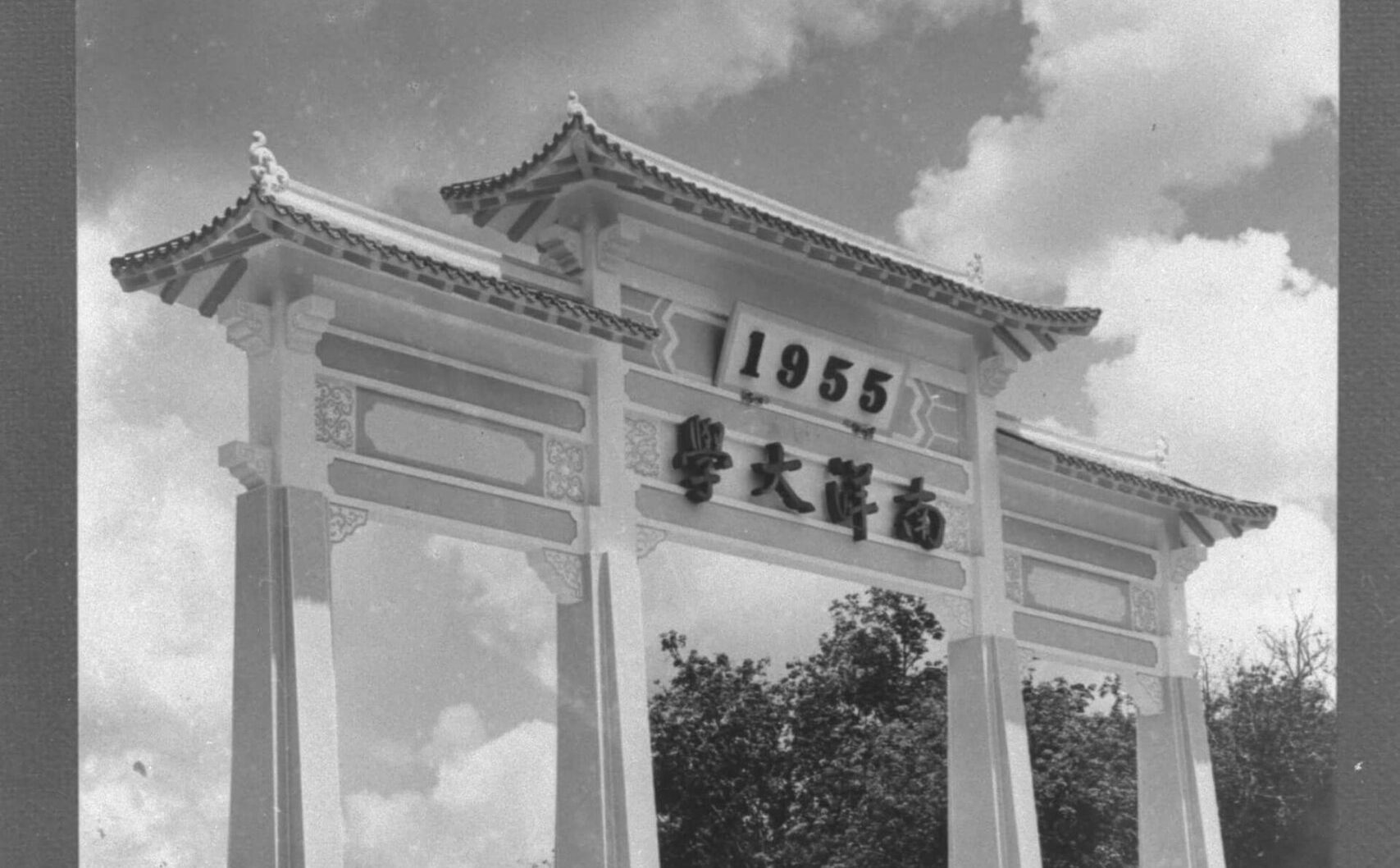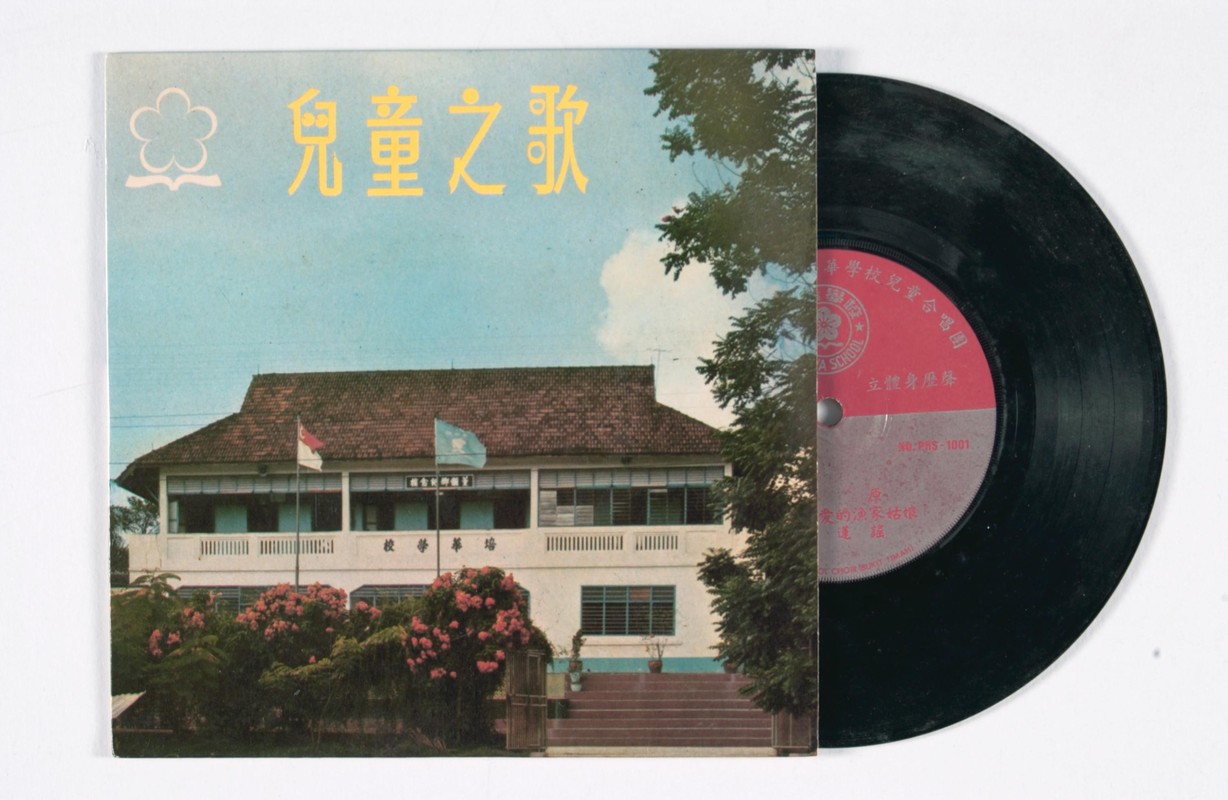Early Chinese schools and the development of art
The development of art in Singapore, from its formative stage up till the mid-20th century, was inextricably linked to the Chinese community’s collective efforts to build up the foundation of education on the island. Although Sir Stamford Raffles (1781–1826), the founder of modern Singapore, had expressed the wish to “render our stations not only the seats of commerce but of literature and arts”, the first art instructor from England did not arrive till 1923 — more than a century later. While the British established an art academy in India (as the French did in Vietnam, and the Dutch did in Indonesia), they did not do so in Singapore.
Singapore’s earliest school was Raffles Institution, which was founded in 1823 to provide education for the children in the local community. According to an 1829 account by Reverend Claudius Henry Thomsen (1782–1835) of the London Missionary Society in Singapore, Rev. Thomsen had started three privately-run schools that taught in Cantonese and Hokkien in Kampong Glam and Pekin Street. These private schools preceded the establishment of free schools such as Chongwen Ge and Chui Eng Si E by the Hokkiens in 1849 and 1854 respectively. After the failed Hundred Days’ Reform in 1898, the Chinese in Singapore began forming “modern” schools such as Chong Cheng School, Yeung Ching School and Yin Sin School in 1905; Khee Fatt School and Tuan Mong School in 1906; and Tao Nan School in 1907. The Chinese High School and Chung Cheng High School were subsequently established in 1919 and 1939 respectively. Many of the teachers in these “modern” Chinese schools were artists and calligraphers who were also actively engaged in art education. The development of Chinese art in Singapore was therefore inextricably related to the Chinese school system.
By comparison, Malay education received little support from the colonial government until 1856, when two Malay day schools were set up in Telok Blangah and Kampong Glam. Tamil schools struggled to survive due to various challenges such as a small Tamil-speaking population and the lack of teachers. Other schools whose medium of instruction was English were also increasing in number as the island’s population grew. Among them were St Margaret’s School (1842), St Joseph’s Institution (1852), Convent of the Holy Infant Jesus (1854), St Andrew’s School (1862), Gan Eng Seng School (1885), Anglo Chinese School (1886), Methodist Girls’ School (1887) and Outram Secondary School (1906).
The emphasis on calligraphy, which predisposed students to aesthetic education, was a common feature of Chinese schools. Calligraphy remained very much in practice during the first two decades of the 20th century. During that period, the intelligentsia in China pushed for modernisation through dramatic social and cultural reforms, leading to the May Fourth Movement in China in 1919. Such events had a direct impact on art education in Singapore as almost all the art teachers in Chinese schools were from China.
Elevated status of art education
Cai Yuanpei (1868–1940), China’s most influential educator and reformer, who served as the first education minister of the Republican government and head of Peking University, came to Singapore while en route to Europe on a study tour on 5 December 1920. During his brief stopover, he visited the newly-established Chinese High School and Tao Nan School and spoke at both venues. He spoke at some length at Tao Nan School, where students and staff were joined by those from Chinese High School, Tuan Mong School and Khee Fatt School. In his address, he reiterated that an equal emphasis on physical education, knowledge education, moral education and aesthetic education was integral to character building. He had first advanced a similar idea in a 1912 essay, where he expressed views on modern education in China and traced aesthetic education and moral education to the Confucian emphasis on rituals and music in ancient times.


Later, in a speech in 1917, he argued for aesthetic education to become a substitute for religion in China — a position he would return to time and again.1 Like his contemporaries Chen Duxiu (1879–1942) and Lu Xun (1881–1936) — considered among China’s greatest 20th century intellectuals — Cai was a cosmopolitan thinker of the May Fourth generation, and deeply concerned about China finding a path towards modernity. The May Fourth Movement began in 1919, and marked a decisive break from outdated traditions with the introduction of new ideas into the cultural life of the Chinese. It had tremendous influence on the Chinese in China and those overseas. As a result of Cai’s influence, the status of aesthetic education in China was for the first time elevated to being as important as other types of education. It was Cai who appointed Lin Fengmian (1900–1991) to head the new National Academy of Art in Hangzhou in 1928. This premier academy, which emphasised modern art, later produced outstanding artists of international renown such as Li Keran (1907–1989), Zao Wou-ki (1920–2013), Wu Guanzhong (1919–2010), Zhu Dequn (1920–2014) and Shui Tit Sing (1914–1997). Shui, a classmate of Zao’s, settled in Singapore in 1940 and was active as an artist besides working as a schoolteacher.
This could well be the reason why the early Chinese schools always had artists on their teaching staff, and continued to produce a good number of important artists who became active in Singapore throughout the century.
| 1 | Cai Yuanpei’s ideas are best captured in the following works: Cai Yuanpei, “Duiyu xinjiaoyu zhi yijian” [Opinion of a new education] in Cai Yuanpei quanji [Completed works of Cai Yuanpei], Vol. 2 (Hangzhou: Zhejiang jiaoyu chubanshe, 1997), edited by Cai Yuanpei yanjiuhui, 9; “Yi meiyu dai zongjiao shuo” [Aesthetic education in substitute of religion] in Cai Yuanpei quanji, Vol. 3, 57–64; “Putong jiaoyu he zhiye jiaoyu: zai Xinjiapo Nanyang huaqiao zhongxue dengxiao huanying hui de yanshuo ci” [Standard education and vocational education: speech at Chinese High School in Singapore] in Cai Yuanpei quanji, Vol. 4, 258–265; “Meiyu yu rensheng” [Aesthetic education and life] in Cai Yuanpei quanji, Vol. 7, 290–292; “Meiyu dai zongjiao” [Aesthetic education in substitute of religion], 370–377. |
Kwok, Kian Chow. Channels and Confluences: A History of Singapore Art. Singapore: Singapore Art Museum, 1996. | |
Chng, Khin Yong David. Xinjia huarenshi shiliao kaoshi [Studies on Historical Materials of Singapore and Malacca Chinese communities]. Singapore: The Youth Book Co., 2007. |










